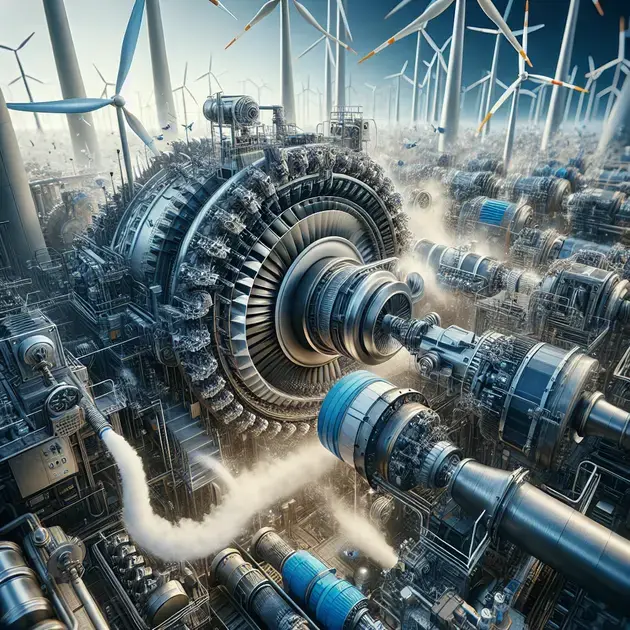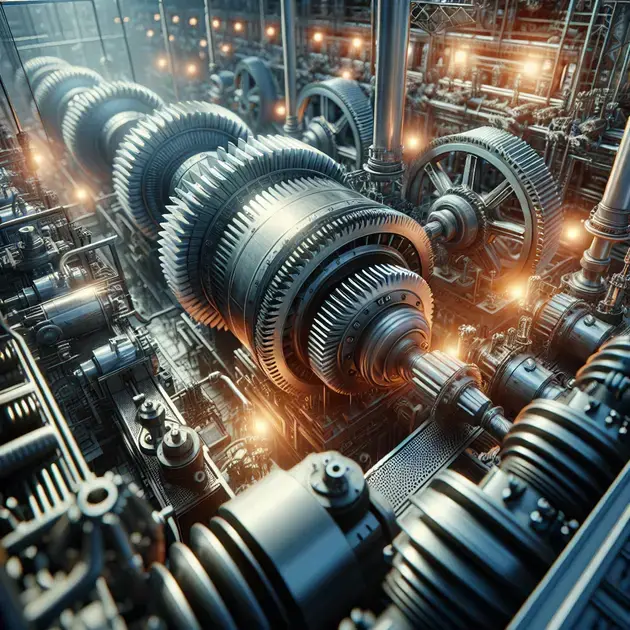Understanding how a generator works is crucial for both homeowners and professionals in various fields. With the increasing occurrences of power outages due to severe weather conditions and other factors, having a clear grasp of generator functionality can be invaluable.
In this post, we will delve into the intricate mechanics behind how a generator operates, shedding light on the fundamental principles that drive its power generation process. By the end of this discussion, you will have a comprehensive understanding of how generators function and their significance in providing backup power solutions.
The Basics of Generator Operation
Generators are essential devices that provide power during outages or in areas where electricity is not readily available. Understanding the basics of generator operation is crucial for ensuring proper functionality and maintenance.
To operate a generator, you first need to ensure that it is placed on a level surface in a well-ventilated area. Next, check the fuel levels and oil before starting the generator. Most generators have a pull-start mechanism, while others may have an electric start option.
One popular generator brand that offers user-friendly operation is Honda. Their generators come with clear instructions on how to start and operate the device. You can find detailed guides and videos on the official Honda website, as well as on their mobile app, available for download on both Android and iOS devices.
Once the generator is running, it is important to monitor the power output to prevent overloading. Understanding the wattage requirements of your appliances and devices is essential for safe operation. Regular maintenance, such as oil changes and filter replacements, will help prolong the life of your generator.
In conclusion, mastering the basics of generator operation, including proper setup, starting procedures, and maintenance, is key to ensuring a reliable power source in times of need.
Exploring the Mechanisms of Power Generation
Power generation involves the process of converting mechanical energy into electrical energy. Understanding the mechanisms behind power generation is essential for optimizing efficiency and output.
One common method of power generation is through the use of turbines, which are driven by various energy sources such as steam, water, or wind. These turbines are connected to generators, which convert the rotational energy into electrical power.
For a deeper exploration of power generation mechanisms, the website of the International Energy Agency (IEA) offers valuable insights and research papers on different methods, technologies, and trends in the power industry. The IEA also provides access to webinars and online courses for those looking to expand their knowledge in this field.
By understanding the principles of electromagnetism and the interactions between magnetic fields and conductors, one can grasp the fundamental concepts of power generation. Various online resources, such as Khan Academy and Coursera, offer courses on electrical engineering and power systems.
In summary, delving into the mechanisms of power generation through turbines, generators, and electrical components is essential for professionals and enthusiasts looking to gain a deeper understanding of how electricity is produced on a large scale.
Significance of Generators in Providing Backup Power Solutions
Generators play a crucial role in providing backup power solutions for residential, commercial, and industrial applications. Understanding the significance of generators in ensuring continuous power supply is essential for disaster preparedness and business continuity.
During power outages caused by severe weather events or grid failures, generators act as a reliable source of electricity to power essential appliances, lights, and equipment. This is especially important for sensitive environments such as hospitals, data centers, and telecommunications facilities.
To explore the importance of backup power solutions further, the Federal Emergency Management Agency (FEMA) website offers resources on emergency preparedness, including guidelines on generator safety and usage. FEMA’s mobile app provides valuable information on disaster response and recovery, including tips on using generators safely.
For businesses looking to invest in backup power solutions, consulting with generator manufacturers such as Generac or Cummins can provide insights into the best options for their specific needs. These companies offer a range of generators for different applications, along with support services and maintenance programs.
In conclusion, recognizing the significance of generators in providing backup power solutions is essential for individuals and organizations looking to mitigate the impact of power outages and ensure continuity of operations during emergencies. Proper planning, maintenance, and utilization of generators can make a significant difference in times of crisis.
Understand the Inner Workings of a Generator
Understanding the inner workings of a generator is crucial for anyone looking to invest in a reliable power source. Generators are designed to convert mechanical energy into electrical energy, providing a backup power supply during outages or in off-grid locations. The basic principle behind how a generator works involves the use of electromagnetic induction, where a magnetic field is created by passing an electrical current through a coil of wire. This magnetic field then interacts with another coil of wire to produce an electric current, generating power.
Generators come in various types, including diesel, gasoline, and natural gas-powered models. Each type has its own set of components and mechanisms that enable the generation of electricity. One key component found in most generators is the engine, which drives the mechanical energy needed to initiate the power generation process. The engine can vary in size and power output depending on the generator’s capacity.
The fuel tank is another essential component that provides the necessary fuel to power the generator. Regular maintenance of the fuel tank is crucial to ensure a constant and reliable fuel supply. Additionally, the alternator plays a vital role in converting the mechanical energy from the engine into electrical output. It consists of a rotor and a stator that work together to produce the electrical current.
In essence, comprehending the intricate workings of a generator involves understanding the synergy between its various components. By grasping the function of each part, users can appreciate the generator’s reliability and efficiency in supplying continuous power when needed, making it a valuable investment for both residential and commercial purposes.
Benefits of Investing in a Reliable Power Source
Investing in a reliable power source, such as a generator, offers numerous benefits for individuals and businesses alike. One of the primary advantages is the assurance of uninterrupted power supply during outages or emergencies. By having a backup generator in place, users can continue their essential activities without disruption, ensuring productivity and safety.
Another benefit of investing in a reliable power source is the ability to maintain critical systems and equipment. In settings where power is essential for operations, such as hospitals or data centers, a generator can prevent costly downtime and potential damage caused by power failures. This reliability translates to peace of mind and protection of valuable assets.
Furthermore, reliable power sources contribute to energy efficiency and cost savings in the long run. By having a backup generator that can efficiently meet power demands, users can reduce their dependence on grid electricity, especially during peak periods when utility rates are high. This strategic energy management not only reduces expenses but also promotes sustainability by optimizing power usage.
In conclusion, the benefits of investing in a reliable power source are multifaceted, ranging from continuity of operations to cost-effective energy solutions. By prioritizing a dependable generator as part of an overall power strategy, individuals and businesses can safeguard their interests and maintain a competitive edge in an increasingly dynamic and power-reliant world.
Key Components of Electrical Generation Systems
Electrical generation systems consist of several key components that work together to produce electricity efficiently and reliably. Understanding these components is essential for ensuring the optimal performance of the generation system. One of the primary components is the prime mover, which is responsible for converting mechanical energy into rotational motion to drive the generator.
The generator itself is a crucial component that converts the rotational energy from the prime mover into electrical energy. It consists of a rotor and a stator, which create a magnetic field that induces an electric current in the generator windings. The control system is another critical component that regulates the operation of the generator, ensuring a stable output voltage and frequency.
The voltage regulator plays a key role in maintaining the desired voltage levels in the electrical generation system. It adjusts the field current of the generator to compensate for load variations and changes in electrical demand. Additionally, the power management system oversees the distribution of generated electricity to different circuits and devices, optimizing energy flow and utilization.
Protective devices, such as circuit breakers and surge suppressors, are essential components of electrical generation systems that safeguard against electrical faults and overloads. These devices help prevent damage to the system and ensure the safety of connected equipment and personnel. By incorporating these key components into the design and operation of electrical generation systems, users can enhance reliability, efficiency, and safety in their power supply infrastructure.
Conclusion
Understanding the inner workings of a generator is essential for anyone considering investing in a reliable power source. Generators, which convert mechanical energy into electrical energy through electromagnetic induction, serve as crucial backup power supplies in various scenarios. By delving into the intricate components of a generator, such as engines, fuel tanks, and alternators, users can grasp the synergy that ensures continuous power supply, making generators valuable for both residential and commercial use.
Investing in a reliable power source like a generator offers a multitude of benefits, from ensuring uninterrupted power supply during outages to maintaining critical systems in vital settings like hospitals and data centers. The reliability of such power sources not only guarantees productivity and safety but also contributes to long-term energy efficiency and cost savings. By reducing reliance on grid electricity and optimizing power usage, backup generators become strategic assets that promote sustainability and operational continuity.
In conclusion, the multifaceted advantages of reliable power sources underscore the importance of integrating dependable generators into overall power strategies. By emphasizing the role of generators in providing continuity of operations and cost-effective energy solutions, individuals and businesses can safeguard their interests and stay competitive in an increasingly dynamic and power-dependent world. Understanding the key components of electrical generation systems, such as prime movers, generators, control systems, voltage regulators, and protective devices, is pivotal in enhancing the reliability, efficiency, and safety of power supply infrastructures.

